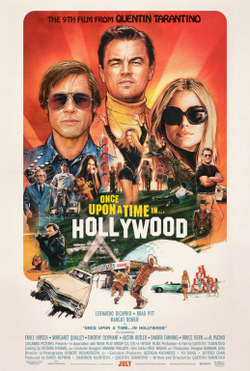Exploring ‘Once Upon a Time in Hollywood’: A Cinematic Masterpiece

Introduction
‘Once Upon a Time in Hollywood’, directed by Quentin Tarantino, has become a cornerstone of contemporary cinema since its release in 2019. Set against the backdrop of 1969 Los Angeles, the film offers a nostalgic and imaginative view of an era marked by the transition of Hollywood. Its relevance lies not only in its artistic achievements but also in its cultural commentary on the film industry, making it an essential watch for both cinema aficionados and casual viewers alike.
Plot Overview and Key Characters
The film follows the intertwined lives of a faded television actor, Rick Dalton (played by Leonardo DiCaprio), and his devoted stunt double, Cliff Booth (portrayed by Brad Pitt). As they navigate the changing landscape of Hollywood, their paths intersect with iconic figures, including the tragic story of actress Sharon Tate (Margot Robbie). The narrative encapsulates a mix of historical events and fictional storytelling, showcasing Tarantino’s signature style of blending reality with imagination.
Critical Reception and Artistic Significance
Upon release, ‘Once Upon a Time in Hollywood’ received critical acclaim, garnering ten Academy Award nominations and winning two. Critics praised the film for its lush cinematography, engaging screenplay, and stellar performances, particularly highlighting the chemistry between DiCaprio and Pitt. Tarantino’s homage to the golden age of Hollywood resonates with audiences, blending nostalgia with a contemporary critique of fame and the evolution of the film industry.
Cultural Impact and Legacy
The film’s discussion of Hollywood’s history and the events surrounding the Manson Family murders stimulate conversations on the darker aspects of fame and the industry’s evolution. As viewers reflect on the film’s ending and its implications, it raises intriguing questions about reality versus fiction in cinematic storytelling. Given its impact, ‘Once Upon a Time in Hollywood’ is expected to maintain its relevance in film studies and discussions about cultural representation in cinema.
Conclusion
‘Once Upon a Time in Hollywood’ stands as a testament to Quentin Tarantino’s unique vision and storytelling prowess. By marrying fact with fiction, the film invites audiences on a journey through a pivotal moment in Hollywood history while also giving a nod to the art of filmmaking. As the film continues to be explored in academic and casual discussions alike, it solidifies its place as a modern classic, inspiring future filmmakers and captivating audiences for years to come.









